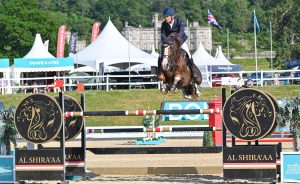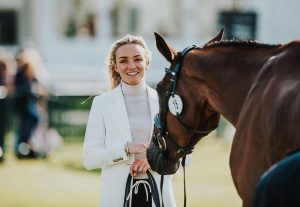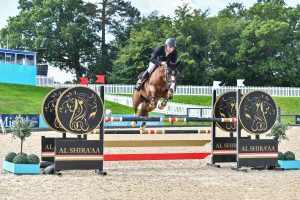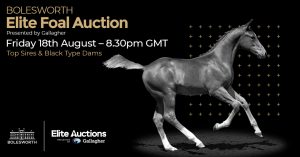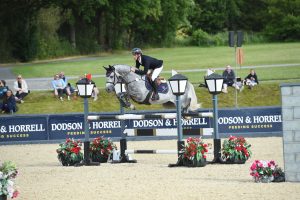




Do you suffer from hat head? Is your Skin rough or bumpy and your hair decidedly straw like are you utterly shattered at the end of your horse filled hours? You could take the sweat out of looking after your horse and put it at livery (pass these tips on to his keeper!) or your trainer could ride your horse more often (in which case they could read these tips too)…. or you could look make sure you look after yourself and keep doing the thing you love.
Rough and Bumpy skin is formed by dead skins cells and bacteria in the hair follicles. Wearing your riding hat is definitely a big part of your problem, but is unavoidable so make sure you make a point of rejuvenating and cleaning hat heads
It sounds pretty obvious … but hitting the shower at the end of the day to rejuvenate your skin and avoiding wearing makeup whilst you’re working up a sweat as this can clog your pores. To reduce the bumps try using a scrub or body brush (not one from the tack room) to get rid of any build up.
The frequent amount of time spent outdoors, exposing your skin to the harsh elements like wind and sun can play a part in wrinkles, age sports, or the feeling of thick skin giving it a leathery look.
It has also been suggested that the world of horses and all that involves damages the elasticity of the skin, causing a droopy face and neck, giving the face a ‘sunken’ look (although we’re still unconvinced). Use a sunblock with a high SPF, sweat-resistant sun cream to prevent skin damage, use a moisturising lotion. I can’t recommend a specific brand but a unisex cheap and effective one is E45. (always check on a small area of skin first)
Straw like hair
Although jumping in the shower after a workout is better for your skin, ensure it’s not at the downfall to your hair. Try just rinsing your hair instead of shampooing especially in the cold weather which has a nasty habit of drying skin.
Washing your hair too much will remove natural, protective oils that your skin and hair naturally produce, once your hair gets used to not being shampooed every day it slowly allows longer between shampooing without that lank greasy look. Take it slowly don’t frighten yourself. Try a one day break for a couple of weeks then stretch this to two etc. It’s hard when your hair is under a hat all day but give it time and your hair will thank you.
Tired and haggard
Too much exercise can leave your body exhausted and without a chance to catch up weaken your immune system leaving you more prone to colds and viruses and looking and feeling exhausted.
Here are five ways to boost your immune system from “The running Bug” …. They know a thing or two about getting hot and sweaty! (Just change “training” for working on yard, riding, running after loose horses, grooming etc etc!!!!!)
1. Eat Sufficient Calories for for the amount of work you are doing
Eating enough calories for training and day-to-day living is probably the single most important factor for an optimally functioning immune system. Excluding the calories needed for training and racing, the body needs a specific number of calories (known as the basal metabolic rate, BMR) just to function. If there is an energy deficiency, immune function is compromised and can often result in illness. Runners with low energy availability are particularly susceptible to upper respiratory-tract infections (URTI’s i.e. coughs and colds). To avoid this, maintain a calorie intake that supports training, daily activity and biological processes. One way to find out if you’re eating enough is to speak to a qualified performance nutritionist; alternatively to put you on the right track, adhere to point 2…
2. Don’t Avoid Fat
Athletes and active individuals should be aiming to consume approximately 25 per cent or more of their total calories from fat for optimal immune function, especially during heavy training periods. As well as contributing to overall energy intake, research shows that long-chain polyunsaturated n-3 fatty acids may specifically change the defences which fight infectious pathogens. In addition, having insufficient saturated fatty acids in the white blood cells inhibit their ability to recognise and destroy foreign bodies such as viruses and bacteria. To ensure you’re getting sufficient fat in the diet, aim to include foods such as eggs, red meat, oily fish, nuts, avocados, olives and olive oils, butter, full fat dairy and coconut.
3. Consider supplementing with Vitamin D
Vitamin D, the sunshine vitamin, has had a surge in research interest in recent years. Compromised vitamin D status can affect a runner’s overall health and ability to train by negatively affecting bone health, innate immunity and exercise-related immunity and yet it is thought more than half of the UK population have insufficient vitamin D levels. Those who spend a lot of time indoors and/or are darker skinned are particularly at risk from deficiency, however chances are without supplementation over the winter in the UK, we are all at risk of developing insufficient or even deficient levels. Your GP should be able to test your vitamin D levels; however, if testing is unavailable, taking a baseline dose (2500IU/day) will help correct any insufficiency and improve immune function. Vitamin D supplements are available in most health shops.
4. Eat More Offal
Offal (heart, kidneys, liver) is one of the most nutritionally complete foods around. It contains fat, has a high protein content, and provides more variety of vitamins and minerals (including zinc which plays a central role in immune function) than any other individual food making it a great immune boosting choice! If taste or texture is a struggle, chop it up and hide in dishes such as casseroles, chilli’s and bolognese.
5. Take a Probiotic
Taking a daily probiotic (micro-organisms found in yoghurt or dietary supplements) has been shown to reduce frequency, duration and severity of immunity illnesses, and improve gut health among athletes during heavy training periods. One study in particular by Gleeson et al. (2011) looked at the effects of taking a daily probiotic (Lactobacillus casei Shirota) over the winter period on the incidence of URTI’s (upper respiratory tract infection) in endurance athletes. They found over 4 months, the number of athletes experiencing coughs and colds lasting 7 days or more was 36 per cent lower in those taking a daily probiotic. Yogurt is also quite useful for its effect of free radicals especially when taken with red/purple berries.
My favourite is yoghurt with summer fruits and some honey. You can buy summer fruits frozen in tubs. Quite handy because it means you can just use what you want…..just remember to take a spoonful out when you make your first cup of tea and by the time you’ve done the morning work rides it will be thawed and ready to stir into your yogourt.

